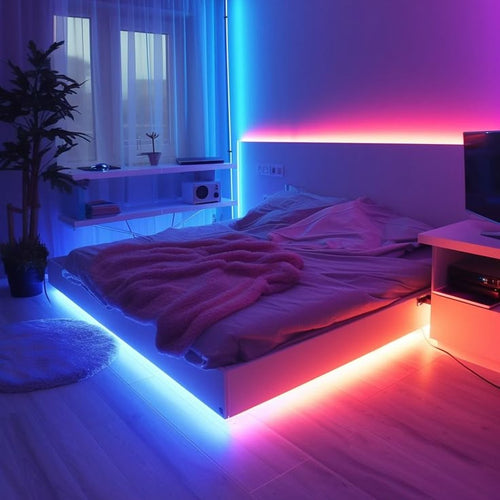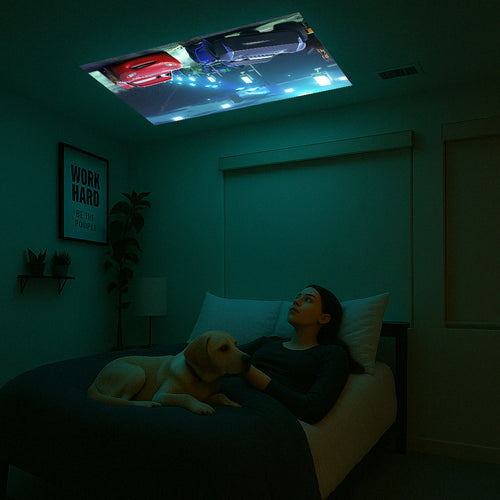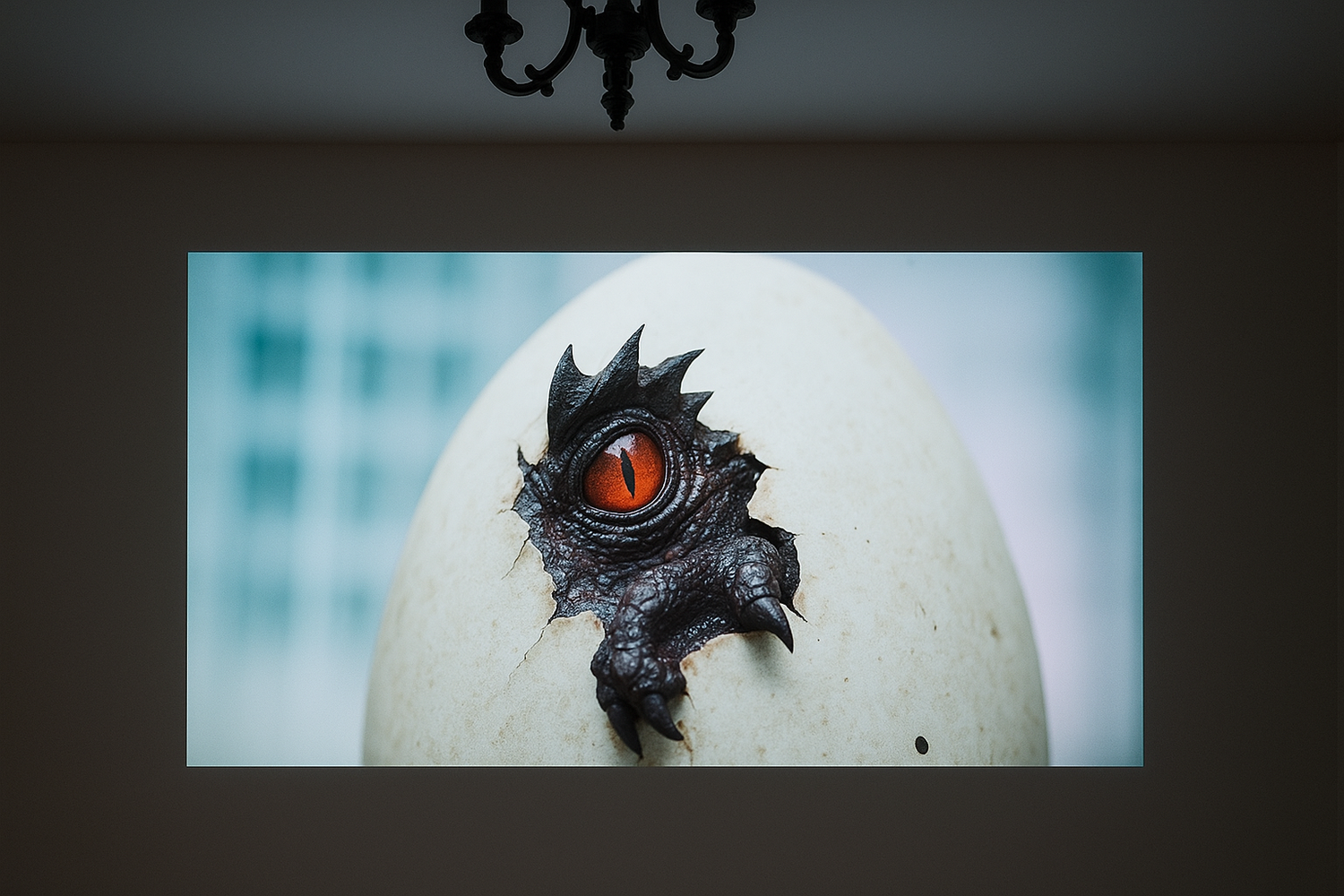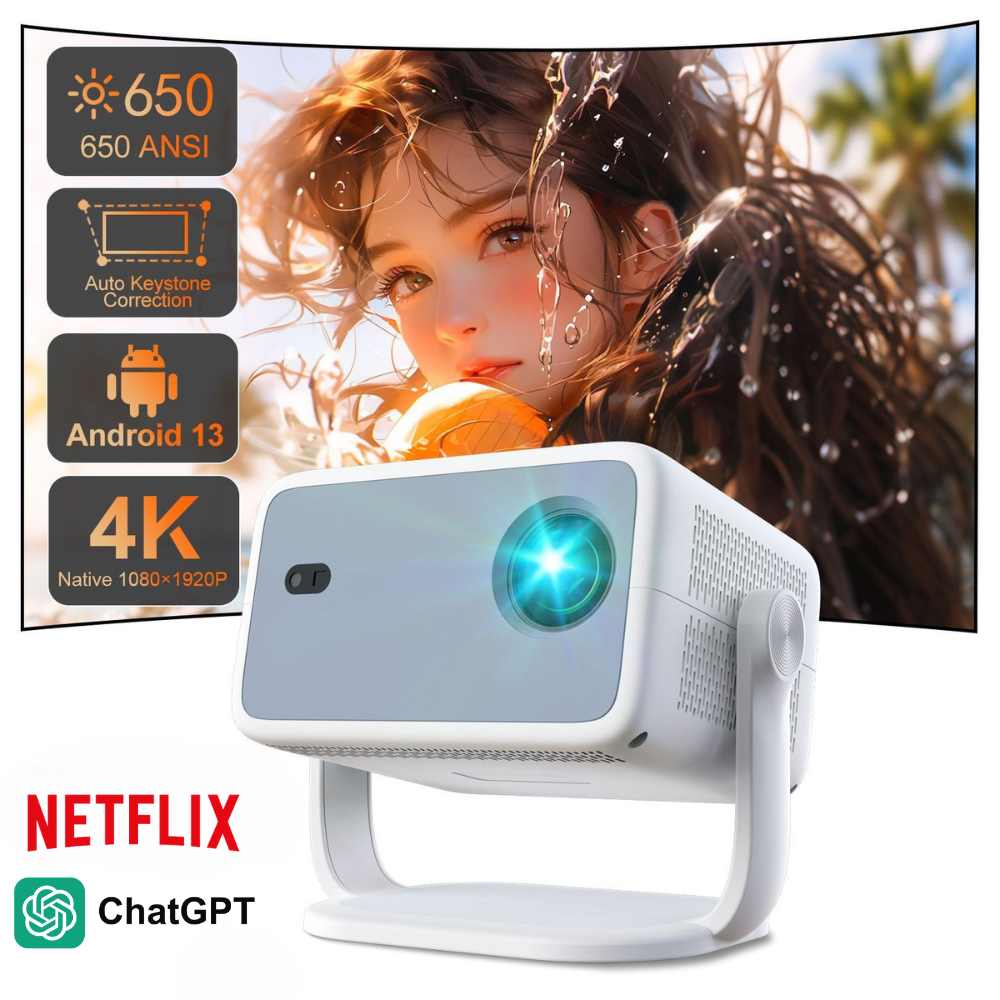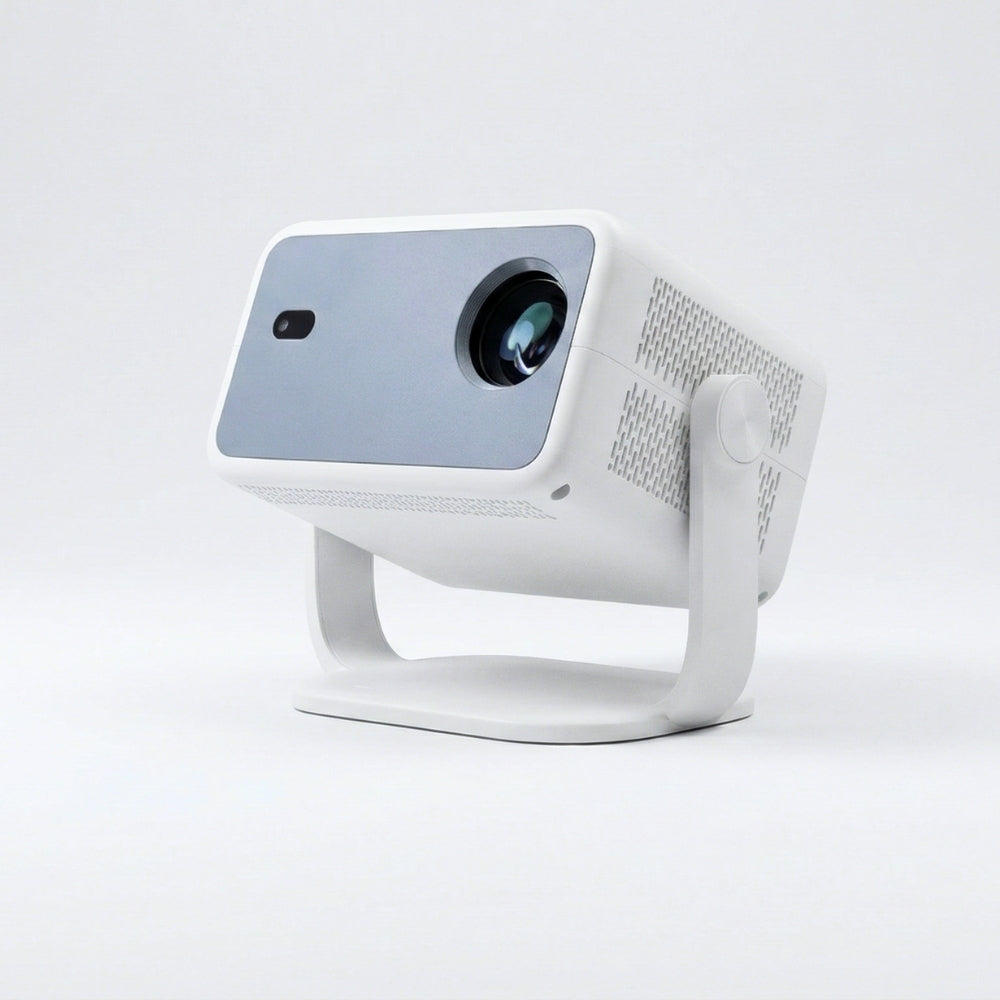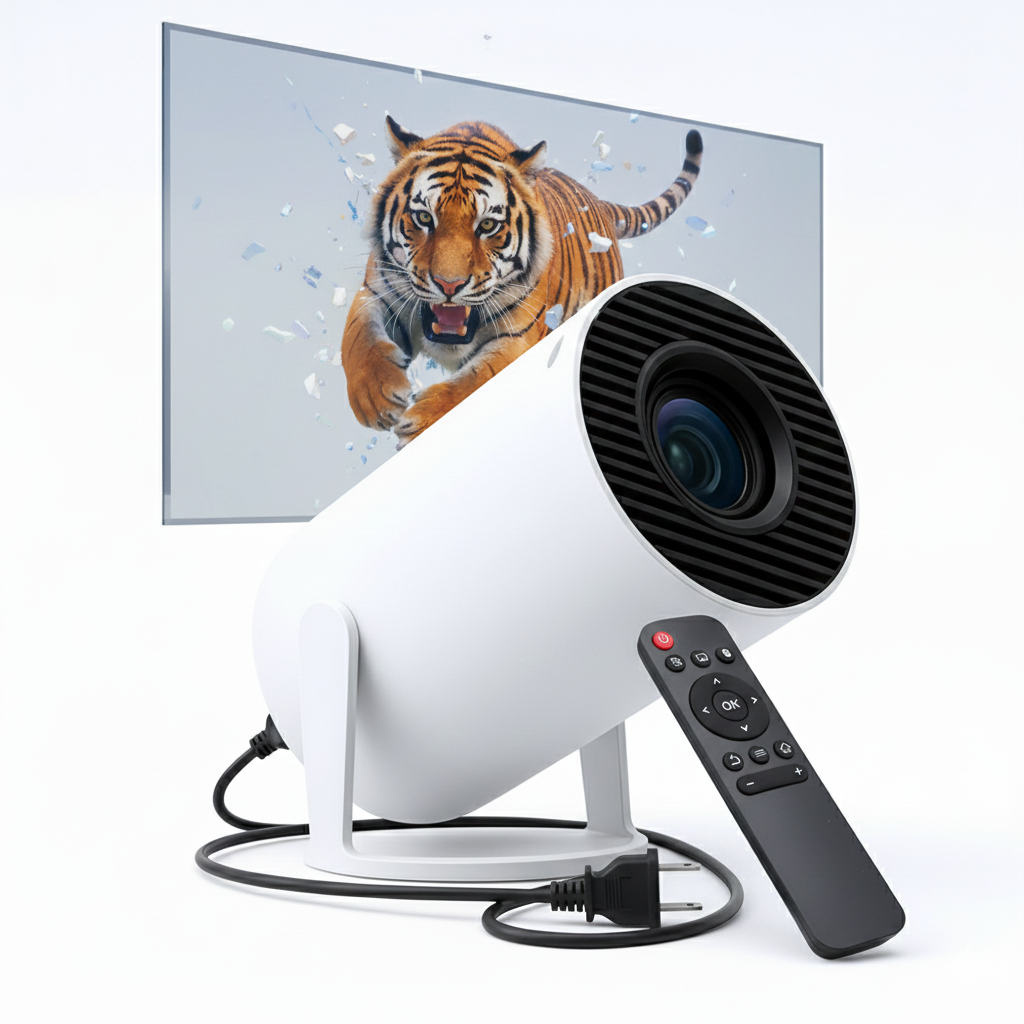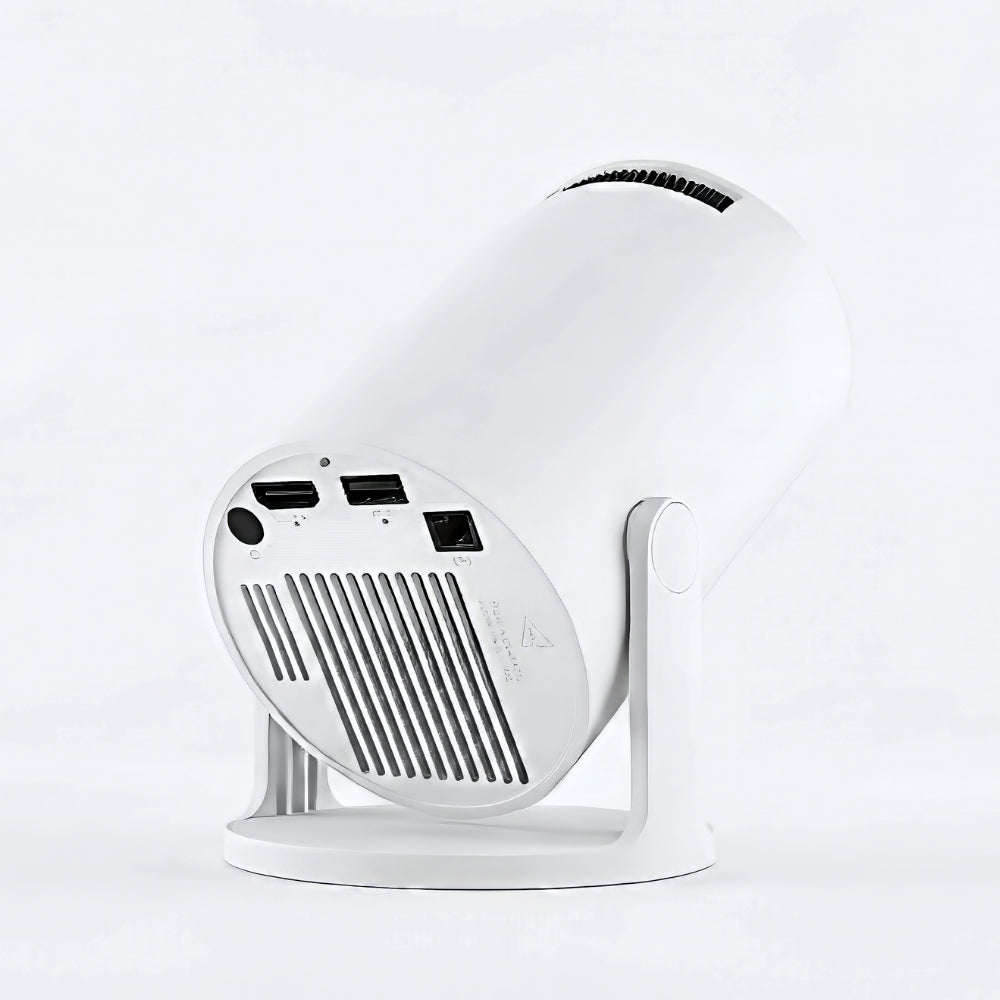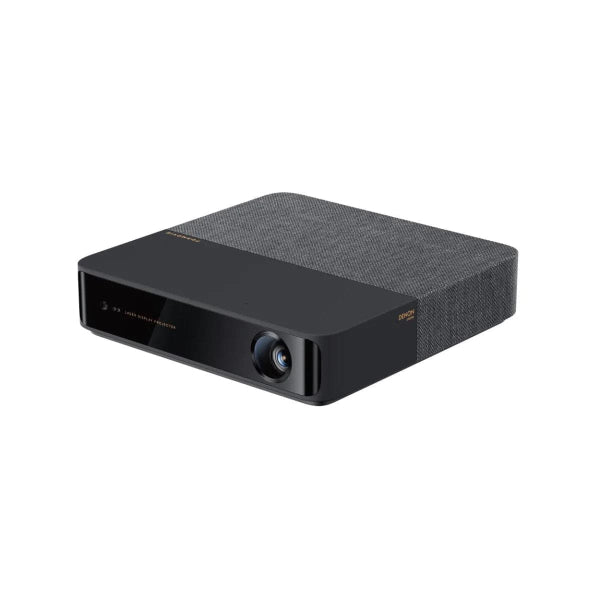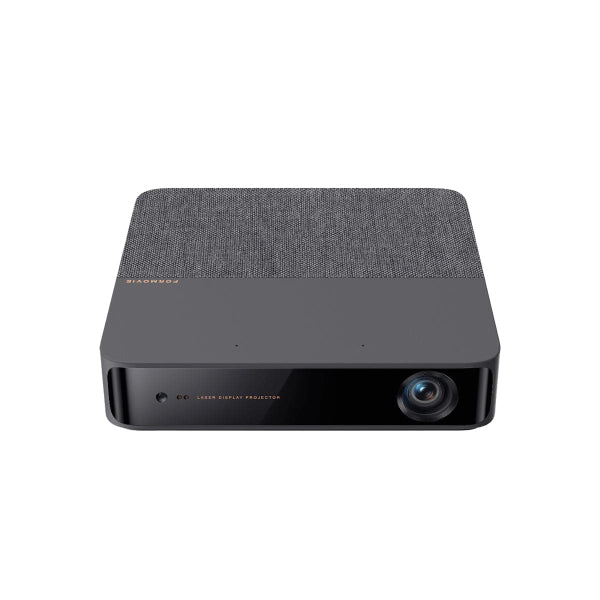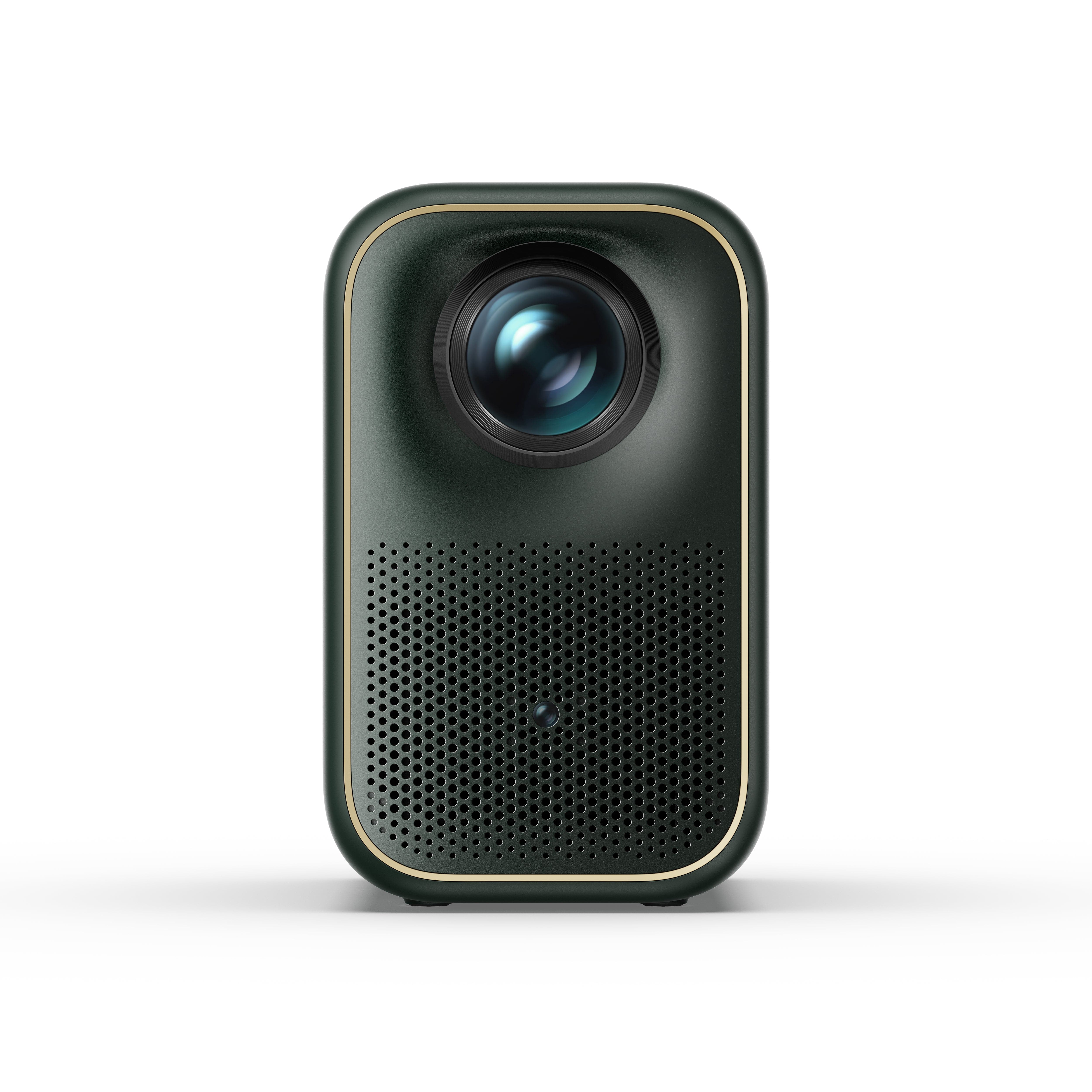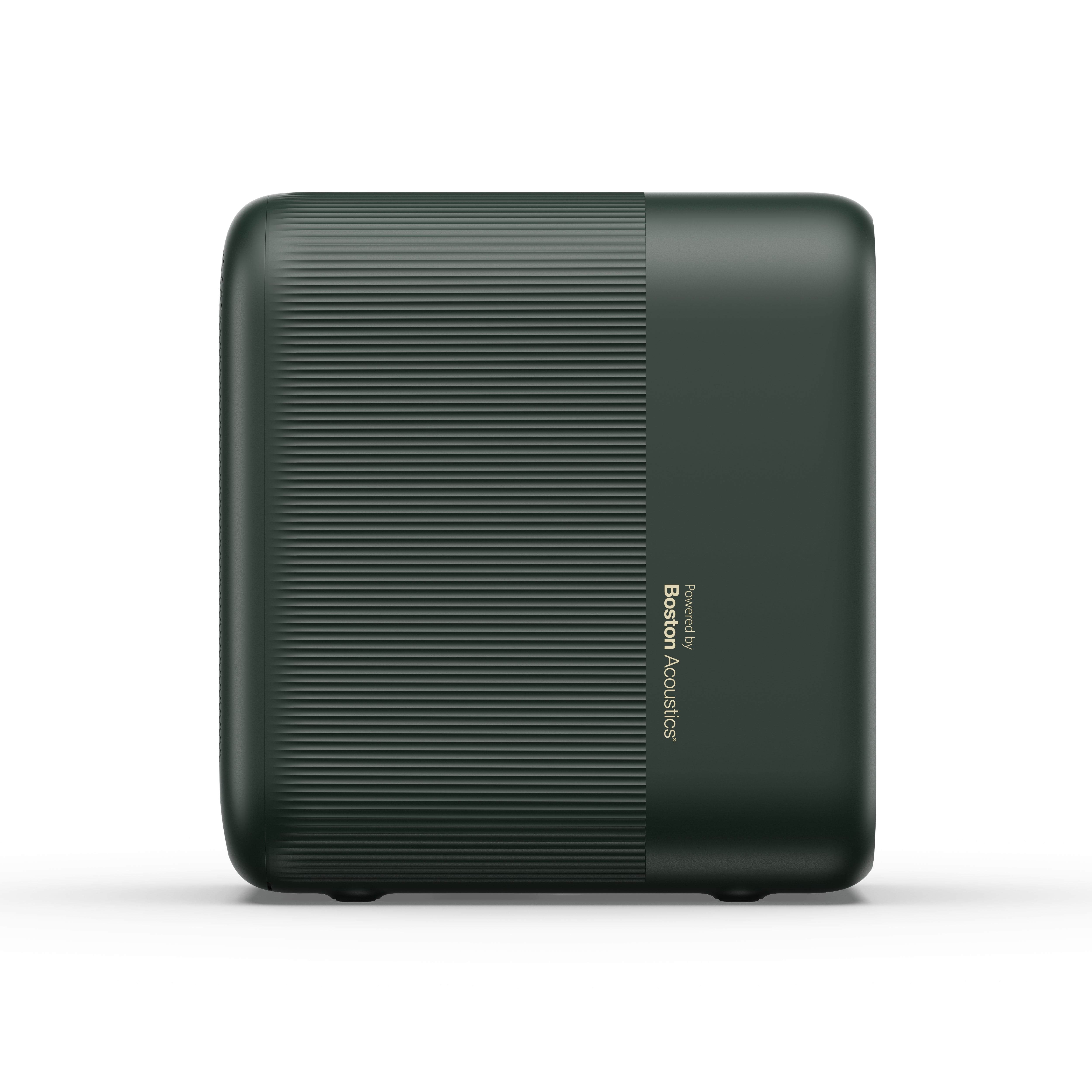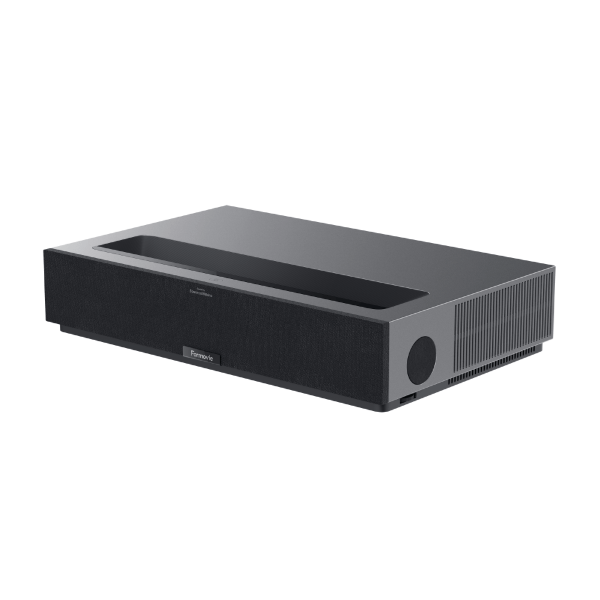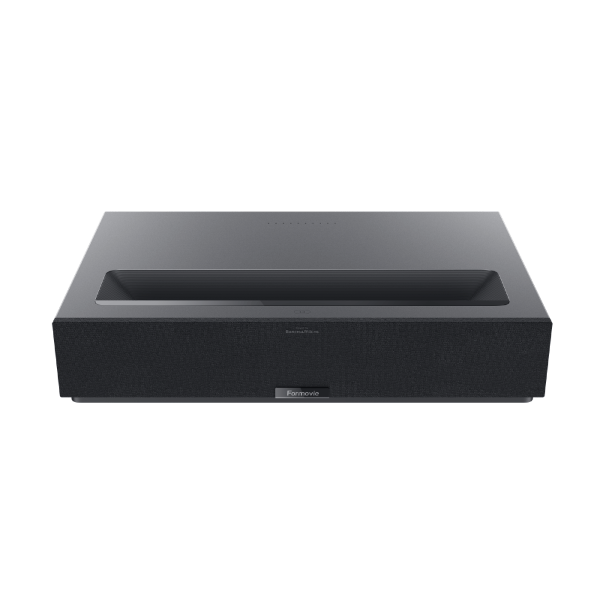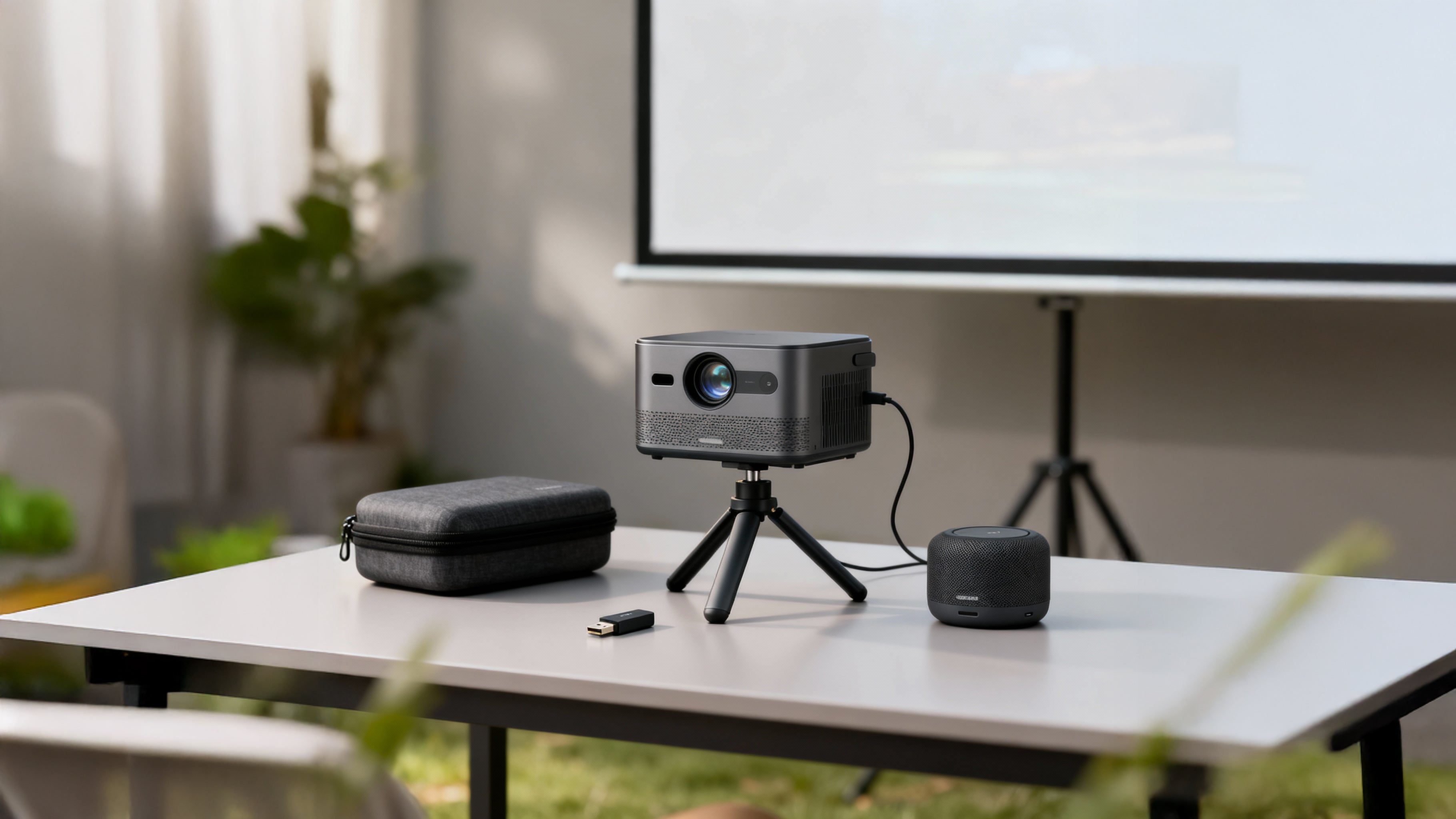Setting up a home theater or projection system often involves choosing the right surface. While dedicated projector screens are popular, the question arises: can you project directly onto a wall? More specifically, what about a black wall? It sounds counterintuitive, but black walls are sometimes considered for projection. This guide explores the viability, advantages, drawbacks, and optimization techniques for using a black wall as your projection surface.
Understanding Projector Screen Basics
Before diving into black walls, let's understand why dedicated projection screens are often the preferred choice:
- Projector screens feature a specialized coating meticulously designed to enhance the sharpness and brightness of projected images compared to standard painted walls.
- These screens typically boast a very smooth surface and are more reflective than typical walls, effectively avoiding imperfections that can degrade image quality.
- Projection Screens come in various sizes, commonly ranging from 60 inches to a massive 330 inches diagonally, catering to diverse usage requirements and room sizes. Some even come as fixed Frame Screen types for a taut, flat surface.
- Certain models are suitable for outdoor use, sometimes designed as inflatable structures for convenient setup and larger viewership.
Beyond standard screens, advanced materials and technologies address specific challenges, particularly ambient light. Screen materials vary widely, from classic matte white surfaces that offer wide viewing angles and accurate colors in dark rooms, to black crystal screens designed to improve black levels and contrast, especially with brighter projectors or some ambient light. For environments where controlling light is difficult, specialized screens like ALR (Ambient Light Rejecting) and CLR (Ceiling Light Rejecting) screens utilize unique optical structures. ALR screens are engineered to selectively reflect light coming from the projector towards the viewer while absorbing or rejecting light from other angles (like windows), making daytime viewing feasible. CLR screens function similarly but are specifically optimized to combat overhead lighting, making them ideal for living rooms or multi-purpose spaces.

- Unlike walls which absorb varying amounts of light, projector screens are engineered primarily to reflect light efficiently back towards the viewers, significantly improving image brightness and contrast for a better Viewing Experience.
- They are often preferred over colored walls due to their matte and neutral coatings, which minimize color distortion and enhance image reflection quality, ensuring better Color Accuracy.
The Role of Black Walls in Projection
So, can you project onto a black wall? Technically, yes. Projector images can be displayed on black walls, but it's not without trade-offs:
- There is often a noticeable decrease in overall picture quality compared to traditional white or grey screens or even white walls.
- Black walls present significant light absorption challenges that require careful attention and specific adjustments to optimize the viewing experience when used with a projector as the Light Source.
- Using a black wall may lead to a higher black floor (the darkest black the system can produce), which paradoxically can affect the perceived depth and detail in the darkest parts of projected images.
- However, a black surface designed specifically for projection, such as specialized Smart Black Projection Screen Paint, can enhance contrast performance, especially by absorbing stray ambient light. This creates a Black Projector Screen effect directly on the wall.
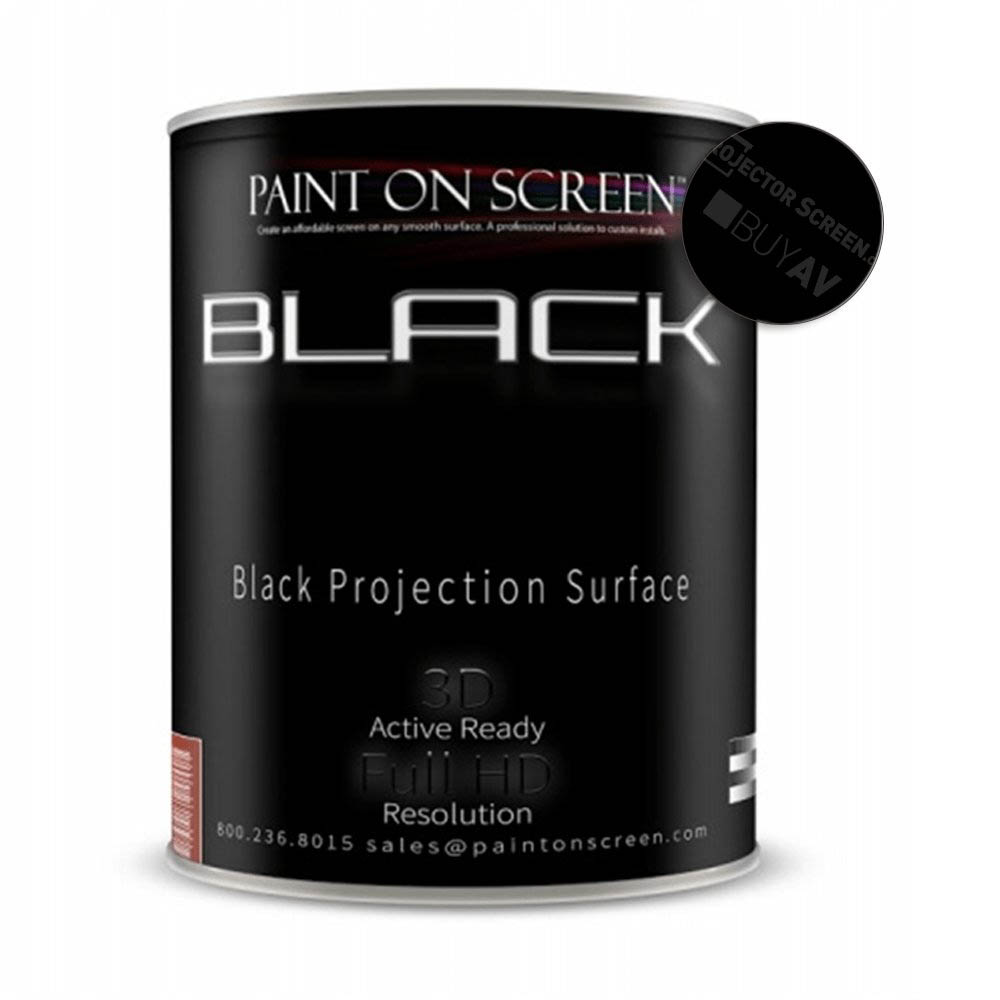
- For optimal application of such paints, two coats are often recommended, typically becoming fully usable after about 24 hours of drying time.
Advantages of Black Walls
Despite the challenges, projecting onto a black wall can offer some potential benefits in specific scenarios:
- In very dim or dark settings, black walls can increase perceived contrast and lessen distracting reflections compared to lighter surfaces.
- A black wall absorbs almost all light hitting it. While this reduces overall brightness, it can potentially enhance color vibrancy and provide higher viewing angles in controlled environments.
- Using a black wall for projection can be a budget-friendly option for those who cannot afford dedicated projector screens, especially if the wall is already painted black.
- Black walls can contribute to achieving better perceived black levels and a more dynamic appearance for projected images, particularly in rooms with some ambient light that the black surface helps absorb.
- Proper usage, potentially combined with specific projector screen paint, might help mitigate excessive light absorption while still maintaining high contrast.
Potential Drawbacks of Black Walls
The disadvantages of using a standard black wall for projection are significant and must be carefully considered:
- Black walls absorb far more light than they reflect. This dramatically diminishes the overall brightness and can significantly degrade the picture quality projected onto them.
- The inherent black color does not allow for accurate light reflection across the spectrum, negatively impacting the brightness and potentially the color accuracy of the projected image.
- Projecting onto a black wall can result in less dynamic visuals, as achieving the deepest black levels alongside bright highlights may be challenging due to overall low reflectivity.
- Compared to white or grey surfaces, images projected onto black walls might not appear nearly as bright, heavily depending on the projector's capabilities (lumens output).
- While using a black wall may provide high viewing angles, the overall image brightness is often severely compromised, impacting the Optimal Image Quality.
Light Absorption and Reflection
The core issue lies in how black walls handle light compared to screens:
- A dark wall for projection absorbs most of the light hitting it, significantly reducing image brightness and potentially leading to a dim or washed-out projection.
- Purpose-built projection screens are designed to reflect light efficiently back towards the viewer, enhancing both brightness and contrast for a more vibrant image.
- The surface texture of projector screens helps diffuse projected light evenly, minimizing hotspots and ensuring a uniform image.
- Dark walls, especially if they have a glossy finish or an uneven surface, can cause irregular light reflection and distortions, leading to an inconsistent visual experience.
- A specialized black matte finish projector paint is designed to absorb a high amount of ambient light, creating deeper perceived black levels and increasing contrast performance, acting like a Black Screen.
Color Impact on Image Quality
The wall color itself has a direct influence on the final image:
- The color of the projection surface can enhance or detract from the clarity and vibrancy of the projected image's colors.
- Grey walls are generally considered a good compromise, offering balanced light reflectivity and absorption, making them suitable for varied viewing conditions and maintaining good color accuracy.
- White walls provide superior brightness as they maximize reflectivity, whereas other wall colors, especially dark ones, can negatively impact image clarity and color balance due to absorption. A White Screen effect is often desired for brightness.
- Dark walls, such as black, can enhance contrast and diminish reflections in dimly lit environments but tend to absorb more light, resulting in a darker overall projection display. They excel in producing deep blacks but sacrifice peak brightness.
Factors Affecting Projection on Black Walls
Several key factors determine the success (or lack thereof) of projecting onto a black wall:
- While projecting on a black wall is possible, it generally negatively impacts picture quality because black surfaces absorb significantly more light and reflect less compared to lighter surfaces.
- A black wall projection setup will typically result in diminished image brightness and contrast when directly compared to using a standard white wall or grey screen.
- For general use, white walls or grey screens are recommended over black walls due to their ability to ensure better brightness, improved perceived picture quality, and higher contrast potential (especially in brighter scenes).
- Specialized black screen paint, designed specifically for projection, aims to absorb significant ambient light, helping to create deeper black levels and enhancing contrast, particularly useful in controlled, dim environments.
- Using a black wall for projection is often considered a budget-friendly alternative for those who cannot afford a dedicated projector screen.
Lighting Conditions
The surrounding light plays a critical role:
- Ambient light significantly affects the effectiveness of any projector setup, requiring control measures like blackout curtains or shades to enhance image quality, especially on a less reflective surface like a black wall. This control is vital for a good Ambient Light Environment.
- Darker room conditions dramatically enhance image visibility and contrast when utilizing a projector on a black wall.
- Increased projector brightness (higher lumens) is often necessary to offset the significant light absorption by a black wall and achieve a sufficiently vibrant image projection.
- A projector with adequate brightness is crucial for overcoming any residual ambient light and compensating for the wall's absorption to ensure a clear image display.
- Minimal indoor lighting, ideally directed away from the projection surface, aids in maintaining the projector's image quality and contrast.
Projector Brightness and Contrast Ratio
Your projector's settings and capabilities are paramount:
- Adjusting the projector's brightness setting is often necessary when projecting on a black wall to ensure a vibrant image by compensating for the wall's high light absorption properties.
- While sometimes used with specialized screens, a low gain screen surface typically enhances black levels and contrast but may affect overall brightness levels – a standard black wall inherently has very low gain due to absorption.
- High-performance projector paint, like the aforementioned Smart Black Projection Screen Paint, aims to maximize pixel definition and offers the highest possible contrast ratio on a painted surface, impacting the required projector brightness usage for Optimal Image Quality.
- Strict ambient light control is crucial for maintaining optimal projector brightness and contrast, requiring rooms to be adequately darkened.
- Projector brightness must often be significantly increased to counteract the light absorption effect of black walls while attempting to maintain acceptable color vibrancy and image sharpness.
Optimizing Projection on Black Walls
If you choose to project onto a black wall, optimization is key:
- To effectively use a projector on a black wall, it is crucial to adjust the projector's brightness settings, often pushing them towards their highest levels to compensate for the wall's extremely low reflectivity.
- Remember that black walls absorb much more light than they reflect, which will significantly reduce the overall image brightness, leading to dimmer projected images compared to lighter surfaces.
- Projecting onto a black wall can serve as a budget-friendly alternative for individuals who cannot afford or do not wish to install dedicated projector screens.
- The color black can offer potentially high viewing angles and enhance color pop or saturation in some cases, but it may struggle to support the same peak brightness level achievable on white or grey surfaces.
- It is generally ideal to project onto a black wall only in environments with tightly controlled lighting (very dim or dark) to optimize image visibility and contrast.
Surface Texture and Smoothness

The condition of the wall itself matters:
- A perfectly smooth wall surface is crucial for achieving a high-quality projected image. Bumps, dents, or textures can cast tiny shadows and cause distortions in the picture.
- Dedicated projector screens possess a specially designed surface texture that helps diffuse the projected light evenly across the screen, minimizing hotspots and providing a uniform image.
- Textured walls can negatively impact picture quality by creating micro-shadows and making the projected images appear less smooth and crisp. An Uneven Surface is detrimental.
- Dark walls with glossy finishes or uneven surfaces can cause irregular light reflections and distortions, leading to inconsistent and potentially distracting projection results.
- Applying a coat of smooth, high-quality matte paint or using specifically designed projector screen paint can enhance the projection quality on textured walls by creating a more uniform surface.
Enhancing Ambient Light Control
Mastering the light in your room is non-negotiable:
- Ambient light significantly impacts projector effectiveness. Making it crucial to have darkened room conditions for improved image visibility and contrast, especially with a black wall.
- Using blackout curtains or shades can effectively block out external light sources, enhancing the viewer's experience by controlling the ambient light environment.
- Managing indoor lighting by keeping it minimal or directing it away from the projection area can help maintain the quality of the projected image.
- Modern Projection Screens designed to reject ambient light, such as ALR (Ambient Light Rejecting) or CLR (Ceiling Light Rejecting) screens, allow for effective viewing even during the day with open blinds or lights on – a feat difficult to replicate with a simple painted wall.
- The surface texture of quality projector screens is designed to diffuse light evenly, minimizing hotspots and providing a uniform image, which can be disrupted by ambient light hitting the surface.
Adjusting Projector Settings
Fine-tuning your projector is essential:
- When setting up a projector for use on a black wall, it is highly recommended to increase the projector brightness significantly to counteract the light absorption and maintain a reasonably vibrant image quality.
- Calibrating the projector's color settings can help achieve more accurate and vibrant colors when projecting onto a black wall, compensating for any color shift introduced by the surface. Aim for good Color Accuracy despite the challenge.
- Adjusting the projector's focus and zoom is essential for obtaining an optimal image size that perfectly complements the projection surface.
- Proper physical alignment of the projector with the wall is crucial to avoid keystone distortion, even though many projectors offer keystone correction features. Physical alignment almost always yields better results for High Quality Image.
- It is important to factor in the room's ambient light levels when assessing the projector's brightness settings to ensure the projected image maintains suitable visibility.
Ideal Projector Positioning
Where you place the projector matters:
- Proper alignment of the projector relative to the wall is essential to avoid keystone distortion (where the image appears trapezoidal) and achieve the best possible image quality.
- Using physical alignment (positioning the projector correctly) rather than relying solely on digital keystone correction features often yields the best, sharpest results.
- Ceiling mounts can provide a more permanent and visually appealing installation option for projectors, keeping them out of the way and correctly positioned.
- The projector should be positioned at the correct distance from the screen (as specified by the manufacturer for your desired image size) to ensure optimal image focus and brightness.
- Avoid positioning the projector too far to the left or right of the screen center to prevent image distortion and maintain quality across the entire projection surface.
Conclusion: Is a Black Wall Worth It?
Projecting onto a black wall is indeed a viable option, but it comes with significant caveats and requires careful consideration and optimization. It excels in absorbing ambient light and potentially enhancing contrast and black levels in very dark rooms, often serving as a budget alternative to dedicated projector screens. However, it inherently suffers from low brightness due to high light absorption, demanding a powerful projector with high lumen output and meticulous control over room lighting. Surface smoothness is also critical. For the best overall picture quality, brightness, and ease of use, a dedicated white or grey quality projector screen remains the superior choice. If you opt for a black wall, be prepared to manage its limitations through careful setup, powerful equipment, and optimized viewing conditions.


